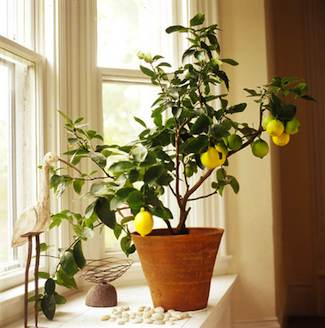- MENU
- HOME
- SEARCH
- WORLD
- MAIN
- AFRICA
- ASIA
- BALKANS
- EUROPE
- LATIN AMERICA
- MIDDLE EAST
- United Kingdom
- United States
- Argentina
- Australia
- Austria
- Benelux
- Brazil
- Canada
- China
- France
- Germany
- Greece
- Hungary
- India
- Indonesia
- Ireland
- Israel
- Italy
- Japan
- Korea
- Mexico
- New Zealand
- Pakistan
- Philippines
- Poland
- Russia
- South Africa
- Spain
- Taiwan
- Turkey
- USA
- BUSINESS
- WEALTH
- STOCKS
- TECH
- HEALTH
- LIFESTYLE
- ENTERTAINMENT
- SPORTS
- RSS
- iHaveNet.com
By Sean Conway

Growing citrus tree indoors is easier than you might think, even in northern climes. All you need to do is follow a few ground rules.
The appeal of growing citrus trees in containers is not new. In fact, the practice has been popular since Louis XIV of France began growing orange trees in pots at Versailles in the 17th century. To awe his courtiers and other crowned heads of Europe, Louis had a vast "orangerie" built with special glass to protect the plants from freezing during the winter months.
Indeed, being able to pick an orange, lemon or lime from your own indoor tree is still impressive. Aside from the novelty factor, containerized citrus trees have a beauty all their own. Their lush, dark green leaves are attractive, and many varieties have intoxicatingly fragrant flowers. Unlike other fruit trees, citrus have the unique ability to produce flowers and fruit at the same time.
I have been growing citrus trees in containers for years, and it's not as difficult as you might think. I planted my first one as a 9-year-old, and 40 years later I still have that tree. It bears a crop of beautiful, small, sour oranges every year.
Follow a few basic ground rules, and you'll be able to grow citrus in containers as well in Chicago as you can in San Francisco, Florida or Baltimore.
First, citrus trees need ample sun. This is true in summer and in winter, since they are evergreen. Citrus prefer 8 to 12 hours of sun per day to thrive. Indoors a window facing south or west is best. Full spectrum grow lights can provide supplemental light during the winter months for those living in northern climates.
Citrus will grow in temperatures that range anywhere from 55 to 85 degrees. They enjoy warmer temperatures during summer when in active growth, but an average temperature of 65 in the home is perfect.
In summer, place your citrus tree outdoors in a sunny location as soon as evening temperatures top 55 degrees. Acclimate your tree to the increased light levels by placing it in a shady location for about a week prior to moving it to full sun.
Citrus prefer a well-drained soil that allows for even moisture but also provides plenty of air space around the roots.
Specialized citrus potting mix can be bought, or you can mix your own starting with a quality potting mix. Add plenty of sand or gravel to allow the soil to drain freely.
When watering your citrus, water thoroughly until water comes out the bottom of the pot, and then not again until the top few inches of the soil are dry.
Citrus prefer high humidity, and keeping plants on water filled pebble trays indoors will help keep humidity up. Misting the leaves also helps and keeps dry-loving spider mites at bay.
Citrus trees in containers require regular feeding to grow well. They are heavy nitrogen users, so make sure your fertilizer contains more nitrogen (N) than phosphorus (P) or potassium (K). Use at least a 2-1-1 ratio of N-P-K.
I use a water-soluble fertilizer once a month from February through May, twice a month from May through September, then back to once per month in October and November. I don't feed at all from December to February.
You don't have to live at Versailles to discover the alluring qualities of citrus in containers. With the proper care you can enjoy the beauty of growing them wherever you live.
Sean Conway's book, "Sean Conway's Cultivating Life: 125 Projects for Backyard Living", describes 125 projects for backyard living and is available at Amazon.com (Click Here for Sean Conway's Cultivating Life: 125 Projects for Backyard Living)
.
AUTOS | HOBBIES | EDUCATION | FAMILY | FASHION | FOOD & RECIPES | HOME DECOR | RELATIONSHIPS | PARENTING | PETS | TRAVEL | WOMEN
How to Grow Your Own Orangerie - Indoor Citrus Trees
© Tribune Media Services